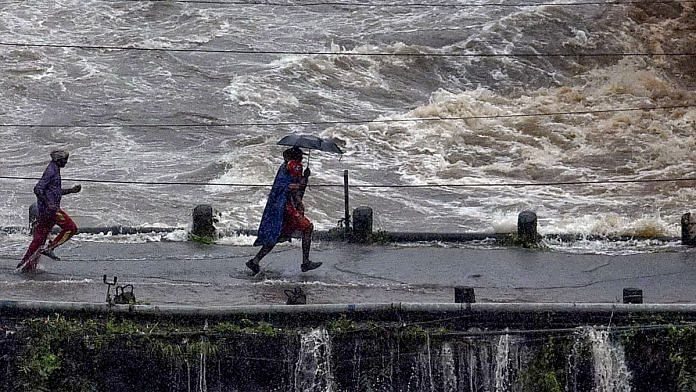New Delhi: In a new study on climate change policies in 136 coastal cities covering 68 countries, a team of international researchers has found a lack of effective climate adaptation policies with no signs of implementation in nearly half the cases.
Researchers from Spain, the UK, Italy and Ireland studied over 226 adaptation policies globally — local, state and national level — and found that in almost 85 per cent of cases, planned actions are not guided by future climate change projections.
Six major Indian coastal cities were included in the analysis — Chennai, Cochin, Mumbai, Surat, Visakhapatnam and Kolkata.
For these cities, the team identified a total of eight policies that explicitly include plans to prepare for climate change impacts: One at the national level, six at state and only one at local level (in Surat). This exhibits the lack of concrete measures at the city government stage.
Of these eight policies, the researchers could find actual evidence of implementation in only two cases — the National Action Plan on Climate Change and the Gujarat State Action Plan on Climate Change.
The study, published in the journal Environmental Research Letters this month, said most existing policies globally have been adopted very recently, starting 2014 — a year before the landmark Paris climate deal was signed — implying that the effects of their planned actions are yet to be seen.
It also provides a report of regional and national governments worldwide on their performance so far in terms of drafting and implementing effective policies to prepare coastal cities for future disasters.
Also read: Doomsday scenario for climate change looks like a rash flight of imagination
Policy designs and implementation
The international effort looked at only those policies that explicitly acknowledge and include climate change risks. It noted that even though these policies are published and may be approved by the governments, not all of them are implemented.
Official data claims only 13.3 per cent are not implemented yet, but actual evidence of implementation was found in only 54.1 per cent of the cases, the analysis said.
The number of policies is highly unevenly distributed geographically, with low- and middle-income countries — more vulnerable and with lower capacity to adapt — lagging behind at all levels. There is a clear signal of shortage of local government-led policies in these nations, it added.
“There is a clear North-South (and within that, developed vs. developing) divide regarding adaptation policy progress,” Marta Olazabal, lead author and researcher with the Basque Centre for Climate Change in Spain, told ThePrint over email.
“The lack of capacities, access to opportunities and resources is to be blamed, and also, they are the solutions for this uneven situation,” she added.
Almost none of the policies include future socio-economic projections under different climate change scenarios.
“This reflects a huge gap between science and policy,” said Olazabal. “Either cities do not have resources or capacities to develop or understand climate information required to make decisions on adaptation, or the climate information available is not usable for decision making.”
In order to be effective, policies must be informed by nothing less than the best available science, she added.
Looming disaster
The latest United Nations’ IPCC model-based projections suggest that global sea level will rise anywhere between 0.26 and 0.77 m at 1.5°C of warming — a target likely to be hit before 2030 if current trends continue.
This would expose millions of people living in coastal regions globally to flooding, high storm surges, and coastal erosion, in addition to other impacts of rising temperatures.
The coastal states of Odisha, Maharashtra, Andhra Pradesh, Tamil Nadu and Kerala in India are no strangers to the impacts of climate change. Increasingly frequent intense cyclones and extreme flooding events have caused massive losses in recent years.
The unprecedented monsoon floods in Kerala in 2018 destroyed around 280,000 houses, 140,000 hectares of standing crops and about 70,000 km of road network. The total recovery needs for the state were estimated to be around Rs 31,000 crore in a post-disaster analysis. This year’s Cyclone Fani damaged over 20,000 villages in 14 coastal districts of Odisha, costing the state over Rs 9,000 crore in total damages.
Many scientists and experts believe the sea level rise estimate should be much higher due to the continually accelerating melting of the polar ice caps. But already, just small changes in sea levels, combined with increasing extreme weather events, have had major consequences for low-lying coastal communities.
Latest estimates suggest that nearly 3.6 crore Indians living on the coastlines will be at risk of chronic flooding by 2050.
The author is a freelance writer and has a keen interest in the science behind climate change and environment.
Also read: Climate fight takes a step back with no deal on carbon markets






